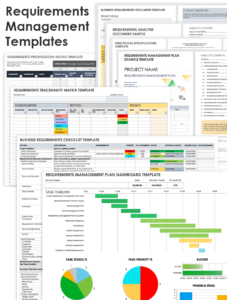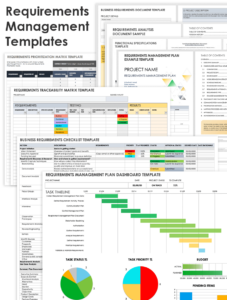A requirement traceability matrix (RTM) is a valuable tool for managing and tracking the relationships between requirements and other project artifacts like test cases, design specifications, and code modules. It provides a comprehensive view of how requirements are implemented and tested, ensuring that all requirements are met and accounted for throughout the development process.
RTMs can be created and managed using a variety of tools, including spreadsheets, databases, and dedicated RTM software. However, regardless of the tool used, the basic structure and content of an RTM remain the same. This article provides a general overview of RTMs and includes a sample RTM template to help you get started.
Understanding Requirement Traceability Matrix
An RTM is a tabular representation of the relationships between requirements and other project artifacts. It typically consists of the following columns:
- Requirement ID: The unique identifier for each requirement.
- Requirement Description: A brief description of the requirement.
- Source: The document or source where the requirement originated.
- Related Artifacts: A list of all artifacts that are related to the requirement, such as test cases, design specifications, and code modules.
- Traceability Status: The current status of the traceability relationship, such as “traced,” “untraced,” or “partially traced.”
RTMs can be used to track a variety of different types of relationships, including:
- Forward traceability: This tracks the relationship between requirements and their implementation in the system.
- Backward traceability: This tracks the relationship between system components and the requirements they implement.
- Bi-directional traceability: This provides a complete view of the relationship between requirements and their implementation, including both forward and backward traceability.
Benefits of Using a Requirement Traceability Matrix Template
There are many benefits to using a requirement traceability matrix template, including:
- Improved Requirements Management: An RTM provides a centralized repository for all requirements, making it easier to manage and track changes.
- Enhanced Traceability: An RTM helps to ensure that all requirements are traced to their implementation, which can help to prevent errors and omissions.
- Reduced Risk: An RTM can help to reduce the risk of project failure by identifying missing or untraced requirements, which can be addressed before they cause problems.
- Increased Efficiency: An RTM can help to improve efficiency by automating the process of tracking and managing requirements.
- Improved Communication: An RTM can help to improve communication between stakeholders by providing a shared understanding of the relationships between requirements and other project artifacts.
Conclusion
Requirement traceability matrix templates are a valuable tool for managing and tracking requirements throughout the development process. They can help to improve requirements management, ensure traceability, reduce risk, increase efficiency, and improve communication.
If you are looking for a way to improve your requirements management process, consider using a requirement traceability matrix template. There are many different templates available, so you can find one that meets your specific needs. Once you have implemented an RTM, you will quickly see the benefits that it can provide.


